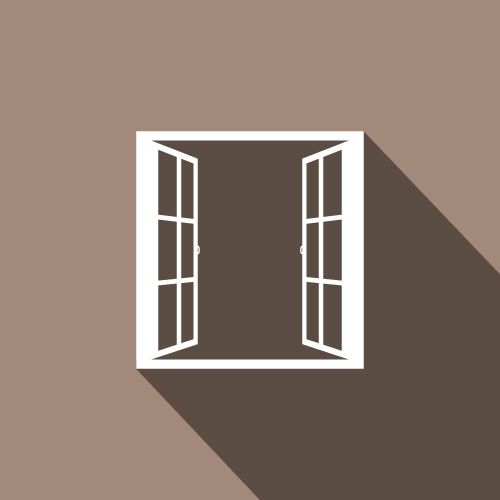Very Early ART: Does a Curative Window Exist?
This case study of 2 patients suggests that very early antiretroviral therapy is not enough to prevent formation of latent viral reservoirs and prevent HIV rebound on treatment discontinuation.
©DenStudio / Shutterstock.com

Starting antiretroviral therapy (ART) during the earliest phase of HIV infection may not be enough to prevent formation of viral reservoirs and enable cure or long-term ART-free HIV remission, according to a case study of 2 patients published online on November 7, 2017 in PLoS Medicine.1
“HIV relapsed despite initiation of ART at one of the earliest stages of acute HIV infection possible. Near complete loss of detectable HIV in blood and tissues did not lead to indefinite ART-free HIV remission,” wrote first author Timothy Henrich, MD, of University of California San Francisco, and colleagues.
One of the patients is the first documented case of an adult started on ART at one of the earliest opportunities after seroconversion.
Other cases have been followed to see if some people can achieve functional “cure” for HIV. A Mississippi baby, a well-known example, tested positive for HIV at birth, was started on ART, and had undetectable HIV levels after a 5-month treatment interruption. Yet, at about age 4, HIV re-emerged. Other examples include 2 adult “Berlin” patients, one of whom may harbor a genetic mutation associated with HIV nonprogression and the other of whom underwent stem cell transplant from a donor with a genetic mutation that prevents HIV entry into cells. In both patients, HIV levels have remained undetectable or extremely low without ART.
The problem with achieving cure or remission is the persistence of viral reservoirs in memory CD4+ T cells in the blood or in tissues. These form a source of viral rebound upon ART discontinuation.
To see whether very early initiation of ART may decrease viral reservoirs and potentially prevent establishment of lifelong infection doctors studied 2 individuals recruited from a pre-exposure prophylaxis (PrEP) program at UCSF. Both patients initially tested negative for HIV, were started on 2-drug PrEP regimens, and then converted to standard 4-drug ART regimens after confirmed HIV infection.
Patient A, a 54-year-old man, was started on ART 10 days after HIV seroconversion, with peak plasma HIV RNA of 220 copies/mL. Viremia was fully suppressed on ART, with no detectable HIV from the ileum, rectum, lymph nodes, bone marrow, CSF, circulating CD4+ Tcells and plasma.
As part of the study, Patient A underwent treatment interruption after 32 weeks ART therapy. After stopping therapy, he remained without viremia for 7.4 months; after this, he rebounded with HIV RNA of 36 copies/mL. Within 6 days, his viral load increased to 59,805 copies/mL, and ART was re-started. Rebound plasma HIV sequences were the same as those during acute infection.
Mathematical modeling found that the latent reservoir size in Patient A was about 200 cells before treatment interruption. Researchers estimated that about 1% of people with a similar HIV burden might be able to achieve lifelong ART-free remission.
Patient B was a 31-year old man who started ART about 12 days after seroconversion, with peak plasma HIV RNA of 3,343 copies/mL. No HIV was detected in tissue samples. However, low-level HIV RNA or DNA were intermittently found in his blood and CD4+ Tcells, and treatment was not interrupted.
Of mice, men, and take home points ...Experiments in mice showed that 1 out of 10 mice that received CD4+ cells from patient A developed very low level HIV viremia (201 copies/mL). Three out of 8 mice that received CD4+ cells from Patient B developed HIV viremia (1,000, 5,000 and 11,000 copies/mL).
Researchers hypothesized that if a true “curative window” of opportunity exists, it may be very small. For example, research suggests that infection can be prevented in monkeys that start ART within 2 days of receiving SIV infection; monkeys started 3 days after receiving SIV experience viral rebound after discontinuing ART, according to studies quoted in the article.
“[A]lthough HIV persisted indefinitely in both of these PrEP cases, a continuum may exist across PrEP, post-exposure prophylaxis and curative early ART strategies. Further investigation in larger cohorts of individuals treated extremely early following HIV infection is warranted,” they concluded.
Due to the rarity of individuals who present with very early HIV infection, the sample size was very small, which may limit the study.
Take Home Points
• Case study of 2 patients found that starting ART at the earliest stage of acute HIV infection is not enough to prevent formation of latent viral reservoirs and prevent HIV rebound upon treatment discontinuation.
• Viremia was fully suppressed for 2 years in Patient A but rebounded after 7.4 months of treatment discontinuation.
• Low-levels of HIV RNA or DNA were intermittently found in Patient B’s blood and CD4+ Tcells, and he did not undergo treatment interruption.
• Mathematical modeling suggested that the latent reservoir size in Patient A was about 200 cells before treatment interruption; about 1% of people with a similar HIV burden might be able to achieve lifelong ART-free remission.
• Further, larger studies are needed to investigate whether a “curative window” exists during which extremely early ART initiation may prevent lifelong infection.
References:
1. Henrich TJ, Hatano H, Bacon O, et al. HIV-1 persistence following extremely early initiation of antiretroviral therapy (ART) during acute HIV-1 infection: an observational study. PLoS Med. 2017 Nov 7;14(11):e1002417.
IDWeek 2023: New Data Provide Closer Look at Real-World Utilization of Cabotegravir for HIV PrEP
October 15th 2023IDWeek 2023. New study found just slightly more than half of prescriptions for cabotegravir for HIV PrEP resulted in at least 1 injection, suggesting limitations in use and access to the injectable HIV integrase inhibitor.
Common Side Effects of Antiretroviral Therapy in HIV Infection
February 7th 2013What are some of the more common side effects of antiretroviral therapy, and what can the primary care physician do to help manage these effects? In this podcast, infectious disease expert Rodger MacArthur, MD, offers insights and points readers to updated comprehensive guidelines.